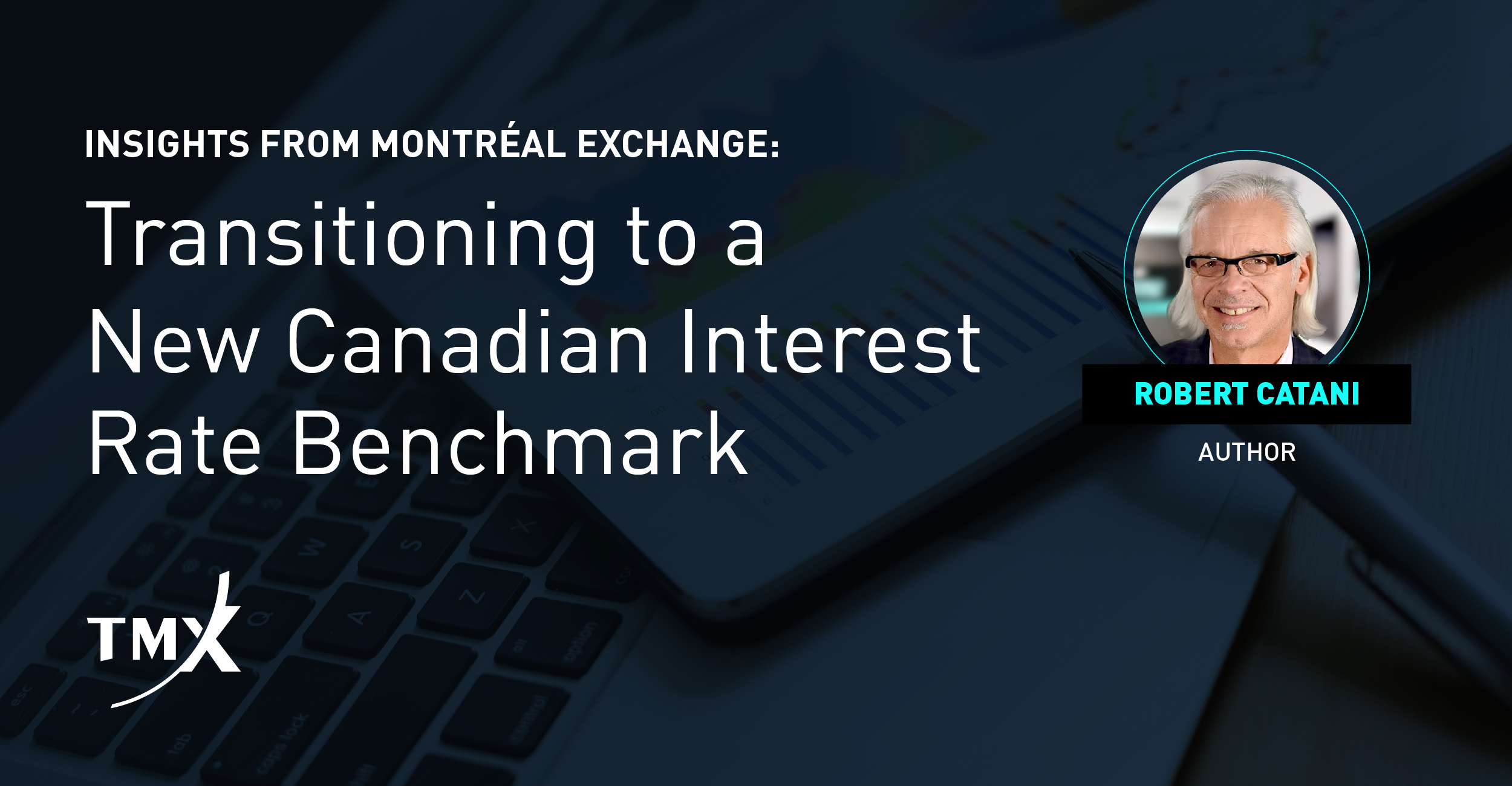Transitioning to a New Canadian Interest Rate Benchmark

By next year, most of the world's jurisdictions, including Canada, will have fully transitioned from LIBOR to a new risk-free alternative benchmark. Risk-free rate (RFR) benchmarks are robust, reliable and resilient to market stress, making them a clear choice for our market structures' continued innovation and sustainability.
What does this interest rate benchmark transition mean for the Canadian short-term interest rate derivatives marketplace?
Transitioning from CDOR to CORRA
In 2021, the Bank of Canada started promoting an enhanced version of the existing Canadian Overnight Repo Rate Average (CORRA) to replace the legacy Canadian Dollar Offered Rate (CDOR) as the preferred Canadian risk-free rate by 2024. The long RFR transition timeline and phased approach consider the intricacy of CDOR integration in commercial contracts and the complex technical calculations required for corporate lending and funding initiatives.
During the transition period, CDOR and CORRA operate alongside each other, with CORRA as the complementary rate. On June 28, 2024, the calculation and publication of all tenors of CDOR will permanently cease, directly impacting trading of the Three-Month Bankers' Acceptance Futures (BAX™) contracts.
On January 9, 2023, quotations in the inter-dealer market switched from CDOR to the CORRA, starting with interest rate swaps. By March 27, 2023, Canadian dollar swaptions and inter-dealer cross-currency swaps will also move to CORRA. However, investors can continue to ask for CDOR-based derivatives after these dates.
Trading Implications for Canadian Derivatives
Montréal Exchange responded early to the increasing demand for interest rate hedging tools, making structural changes linked to the benchmark. The exchange launched a new market-making program for the Three-Month CORRA Futures (CRA™) in 2020 and the new One-Month CORRA Futures (COA™) in January 2023.
The goal of launching the CORRA futures product suite early was to begin building liquidity and minimizing future risks. Investors can trade CRA and COA alongside BAX, executing relative cross-market views by spreading CORRA futures against other risk-free rate futures. These trading strategies allow them to hedge repo risk and offset funding risk in cash versus futures basis trades.
With the new interest rate benchmark, investors can trade a true rate that is resistant to manipulation and has no credit spread in it and gain more precise exposure to the Bank of Canada's monetary policy and facilitate liquidity. The ability to cut out the credit component on the risk-free rate is significant. It allows everyone to trade the front end based on Canadian monetary policy and not on credit risk.
The US has mandated the cessation of LIBOR for new contracts this year, and markets have voluntarily transitioned to risk-free rates early. The accelerated adoption of Secured Overnight Financing Rate (SOFR) futures in the US will also impact the cross-currency swaps trading ecosystem, creating a more vibrant RFR market in Canada and the US. It is also expected to hasten the migration of swap derivatives transactions in Canada.
For investors executing cross-market trades, alignment across major markets is an important consideration. The phased transition approach will help ensure sustained market activity and liquidity until the cessation date. At that point, outstanding BAX futures contracts will automatically convert to equivalent CORRA futures contracts.
How can derivatives traders and institutional investors better prepare for the planned phase-in of the Canadian alternative risk-free rate benchmark? The MX CORRA microsite has insights, FAQs, guides and other resources to help investors plan ahead and start thinking CORRA-first for their short-term interest rate trading strategies.
Copyright © 2023 Bourse de Montréal Inc. All rights reserved. Do not copy, distribute, sell or modify this document without Bourse de Montréal Inc.'s prior written consent. This information is provided for information purposes only. Neither TMX Group Limited nor any of its affiliated companies guarantees the completeness of the information contained in this publication, and we are not responsible for any errors or omissions in or your use of, or reliance on, the information. This publication is not intended to provide legal, accounting, tax, investment, financial or other advice and should not be relied upon for such advice. The information provided is not an invitation to purchase securities or derivatives listed on Montreal Exchange, Toronto Stock Exchange and/or TSX Venture Exchange. TMX Group and its affiliated companies do not endorse or recommend any securities referenced in this publication. BAX, COA, CRA, Montréal Exchange and MX are the trademarks of Bourse de Montréal Inc. TMX, the TMX design, The Future is Yours to See., and Voir le futur. Réaliser l'avenir. are the trademarks of TSX Inc. and are used under license.


